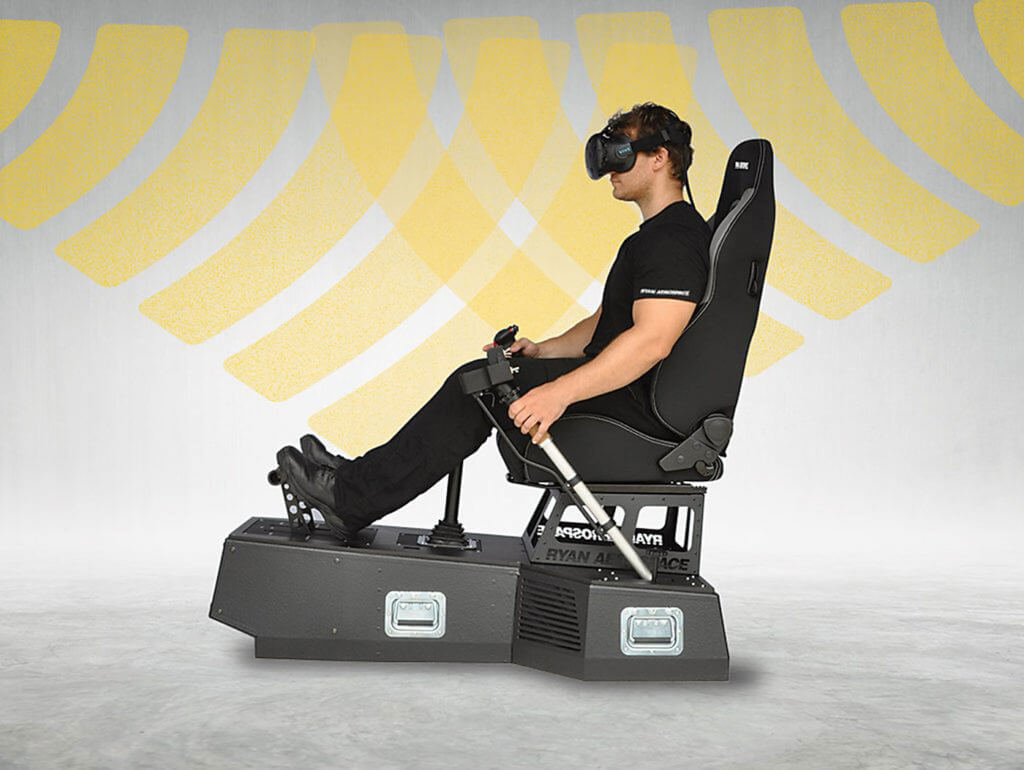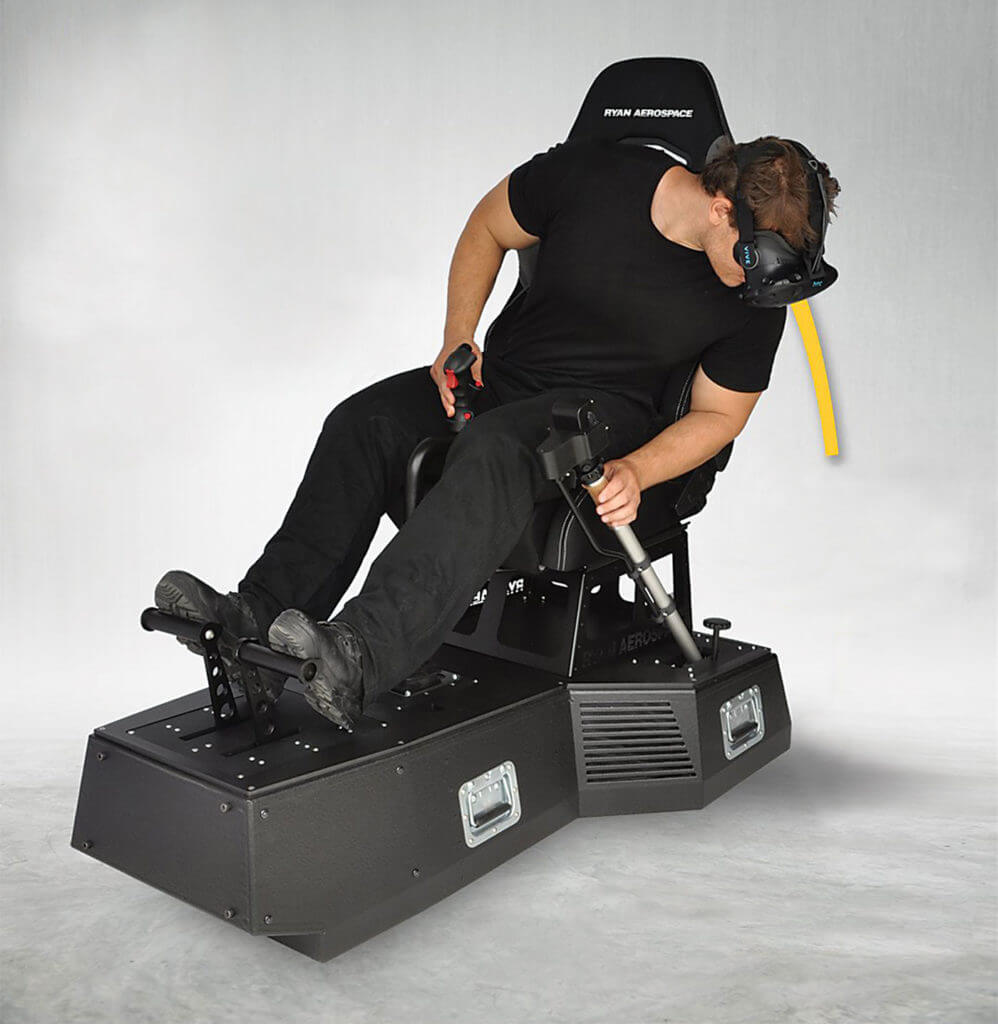“So far, the reports back are that in most simulations, you’re looking at, on average, about a 50 percent reduction in training cost and time,” said Mike Altman, chief executive officer of Precision Flight Controls (PFC).
 That stunning detail alone would be enough to make the price of the new HeliMod Mark III from PFC and Ryan Aerospace worthwhile. However, there is also the Mark III’s wealth of other strengths, such as its tiny footprint, ability to be reconfigured for virtually any type of aircraft, portability, available motion platform and affordability. Add those in, and it makes you wonder if every operator flying with a long-line will eventually want to have one (or two).
That stunning detail alone would be enough to make the price of the new HeliMod Mark III from PFC and Ryan Aerospace worthwhile. However, there is also the Mark III’s wealth of other strengths, such as its tiny footprint, ability to be reconfigured for virtually any type of aircraft, portability, available motion platform and affordability. Add those in, and it makes you wonder if every operator flying with a long-line will eventually want to have one (or two).
The HeliMod Mark III is the latest innovation from the ongoing partnership between PFC and Ryan Aerospace (Australia) and comes out of the extensive simulator experience of both firms. PFC, which is based in Rancho Cordova, California, has been making fixed-wing simulators for almost 30 years. Ryan Aerospace, from Southport, Queensland, has been providing military and civil customers with helicopter simulators for nearly 15 years.
The two companies have also worked together to produce the FAA-certified Bell 206/407 AATD (advanced aviation training device), which will soon be delivered to launch customer Honeywell.
 While the HeliMod Mark III doesn’t yet have approvals to count toward training hours, the U.S. Federal Aviation Administration (FAA) and other regulators have given their okay to use it as a training supplement.
While the HeliMod Mark III doesn’t yet have approvals to count toward training hours, the U.S. Federal Aviation Administration (FAA) and other regulators have given their okay to use it as a training supplement.
With the primary feature of the Mark III being its virtual reality (VR) head-mounted display, much of that training will likely center around long-lining. That’s because the VR headset’s stereoscopic, 3D imaging gives pilots a 360-degree view of their virtual surroundings. They can even lean out and look down and all around, providing for the kind of full immersion that is vital for long-line training.
Said Altman: “You can practice pretty much any form of vertical reference flying in the Mark III, including sling loads. For people doing forest fires, we can set up a fire 30 miles away and they can navigate to that, drop retardant and come back to do it all over again.”
Each scenario can be preselected, or the instructor can change it as the student is flying. Weather can also be adjusted to go from visual to instrument conditions.
Each training flight is recorded to allow the student to learn from their efforts. Instructors are also able to view a student’s flying in real-time on a separate monitor and can pause a scenario to provide an in-training lesson.
 In addition to long-lining, Altman–an ex-military pilot who used to fly transports–said the HeliMod Mark III has various other training applications: “Operators can use it to supplement hovering, practice point-to-point navigation and engine-out procedures. Pilots can fly in formation with other helicopters or aircraft; they can get familiar with unfamiliar territory; they can use it with other ground reference vehicles. It depends on the software they’re using. . . . It’s only limited by your imagination.”
In addition to long-lining, Altman–an ex-military pilot who used to fly transports–said the HeliMod Mark III has various other training applications: “Operators can use it to supplement hovering, practice point-to-point navigation and engine-out procedures. Pilots can fly in formation with other helicopters or aircraft; they can get familiar with unfamiliar territory; they can use it with other ground reference vehicles. It depends on the software they’re using. . . . It’s only limited by your imagination.”
The Mark III is software “agnostic,” which allows it to fit with a variety of software packages–such as VBS3, X-Plane 11, Digital Combat Simulator and Prepar3D–to suit different training scenarios.
Additional features like the D-Box motion base can be added to provide a more realistic flying experience. “There’s that seat-of-the-pants feel that’s like a real helicopter,” said Altman.
The Mark III’s flight controls also help make it feel like you’re piloting a real helicopter. The cyclic, collective and pedals are replicas of the model the Mark III is designed to simulate. They are also interchangeable and can be detached and swapped out in minutes. This is especially valuable for clients who need the Mark III to approximate each model of helicopter they fly.
 Currently, the HeliMod Mark III is designed to mimic the Bell 206 and 407, but other models are being added. Additionally, PFC and Ryan can customize the simulator to fit any model of helicopter that an operator has in its fleet.
Currently, the HeliMod Mark III is designed to mimic the Bell 206 and 407, but other models are being added. Additionally, PFC and Ryan can customize the simulator to fit any model of helicopter that an operator has in its fleet.
With an off-the-shelf price range of US$25,000 to $40,000, the Mark III occupies it’s own unique niche.
Said Altman, “We’re not finding anything else that falls into that price range and has the motion built into it and the flexibility of being able to have interchangeable components.”
The Mark III is so affordable some enterprising customers have even found other uses for it. For example, the Royal Australian Navy is using its three customized simulators as a recruitment tool for aspiring aircrews.
Altman said there are even customers who want to set-up the portable HeliMod Mark III in their homes. Once they sit down and try the simulator at a trade show, customers start dreaming up all kinds of ways they can use this intriguing device and envisioning all kinds of locations where they can place it.
“We’ve had experienced pilots with tens of thousands of hours sit down and enjoy the heck out of it,” said Altman. “We’ve had people with very little time in helicopters who adapt quite quickly. From new pilots to generals and admirals, everyone keeps coming back to try the Mark III. So, we must have a winner.”









